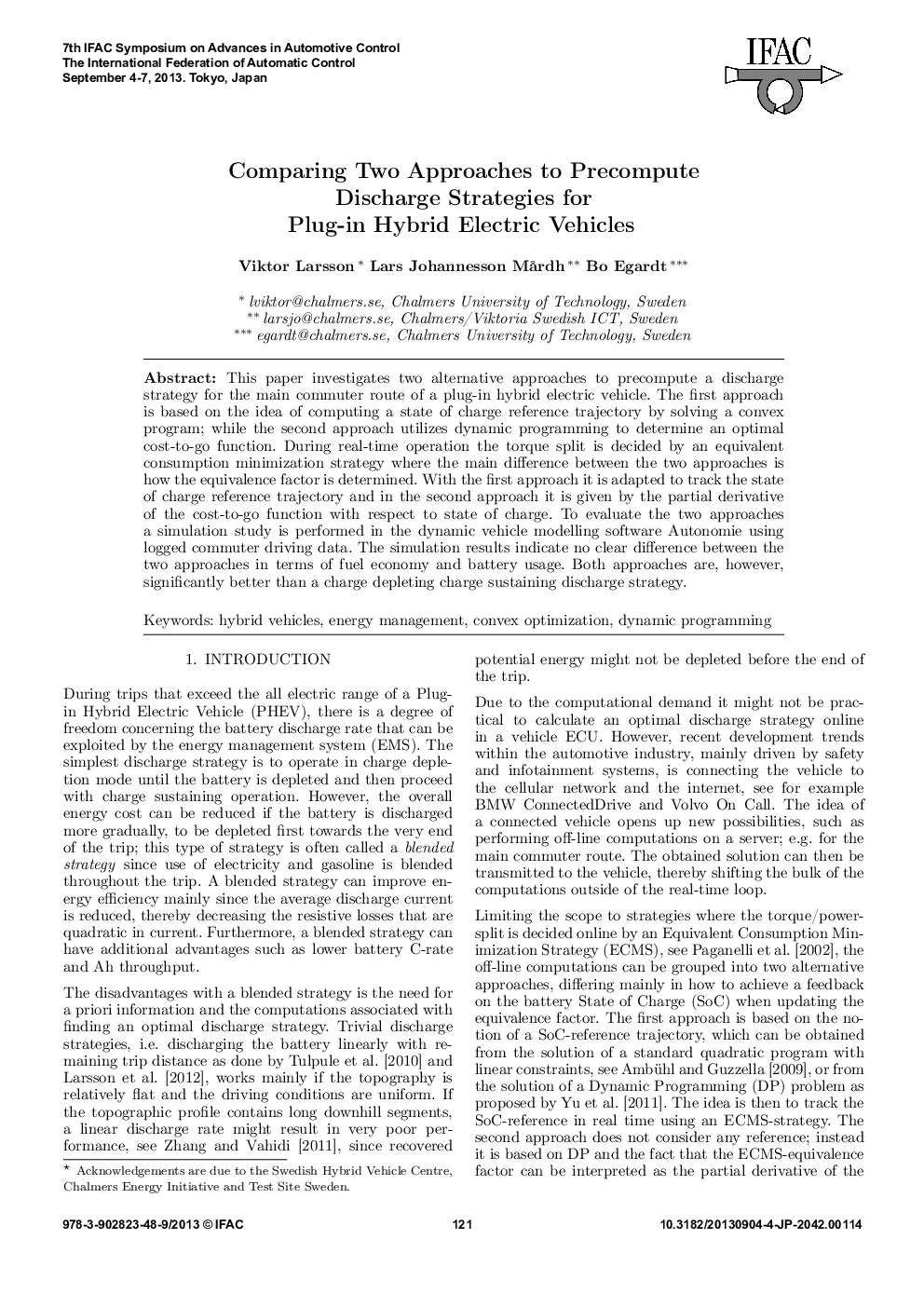| Article ID | Journal | Published Year | Pages | File Type |
|---|---|---|---|---|
| 715561 | IFAC Proceedings Volumes | 2013 | 6 Pages |
This paper investigates two alternative approaches to precompute a discharge strategy for the main commuter route of a plug-in hybrid electric vehicle. The first approach is based on the idea of computing a state of charge reference trajectory by solving a convex program; while the second approach utilizes dynamic programming to determine an optimal cost-to-go function. During real-time operation the torque split is decided by an equivalent consumption minimization strategy where the main difference between the two approaches is how the equivalence factor is determined. With the first approach it is adapted to track the state of charge reference trajectory and in the second approach it is given by the partial derivative of the cost-to-go function with respect to state of charge. To evaluate the two approaches a simulation study is performed in the dynamic vehicle modelling software Autonomie using logged commuter driving data. The simulation results indicate no clear difference between the two approaches in terms of fuel economy and battery usage. Both approaches are, however, significantly better than a charge depleting charge sustaining discharge strategy.
